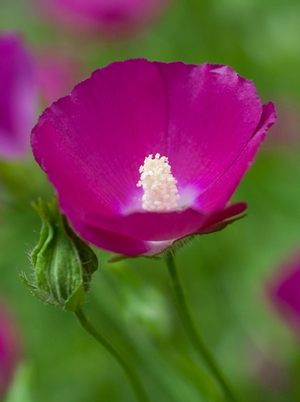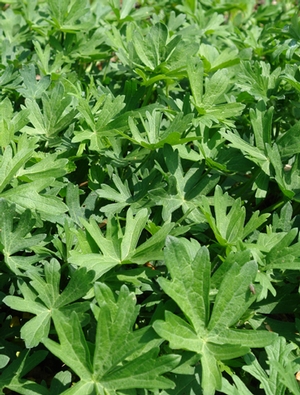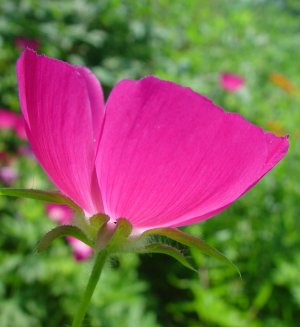Callirhoe involucrata
Common: wine cups, purple poppymallowCallirhoe involucrata LP50 - 50 per flat
- Height: 6"-8"
- Spread: 1'-3'
- Spacing: 18"-24"
- Hardiness Zone(s): 5-9


Callirhoe involucrata LP50 - 50 per flat



Easily grown in dry to moist, well-drained soils in full sun. A long tap root gives the plant good drought tolerance but makes the transplanting of established plants difficult.
Outstanding and very attractive, Callirhoe involucrata is low growing with deeply dissected dark green foliage that gives rise to an explosion of electric purple, single, upright flowers from July to early September. This plant behaves like ivy so let it drape over stone walls, float over early season groundcover grasses, or creep between stones.
Callirhoe involucrata is easily grown in dry to moist, well-drained soils in full sun. A long tap root gives the plant good drought tolerance but makes the transplanting of established plants difficult. Native from Minnesota to Texas, wine cups frequently occurs in rocky soil in prairies, fields, and along roadsides.
While wine cups is planted in several locations throughout our trial gardens, most notice how it rambles and plays with our Carex pensylvanica on a hill leading into a bioswale, giving much needed shade during the heat of the summer and providing a long bloom time. It occasionally wanders through the gardens, popping up unexpectedly in our mid-height meadow, non-aggressively, but a pop of color among the warm season grasses.